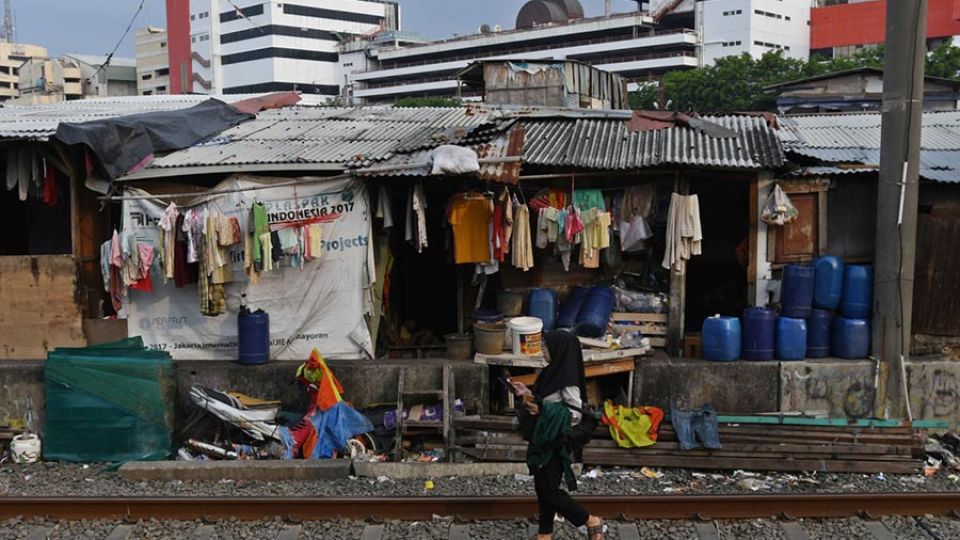November 18, 2022
JAKARTA – The World Bank last September revised its international poverty line to monitor the development of global poverty. The update aims to better reflect the changes in consumption patterns globally by adopting the 2017 Purchasing Power Parities (PPPs) announced in May this year. Therefore, a better cross-country poverty comparison could be conducted.
The obvious impact of the update is the upward revision in the level of poverty both globally and at the country level as the cutoff increased from US$1.9 to $2.15 per day. It reflects the typical national poverty line of low-income countries and is dedicated to measuring the development of extreme poverty all over the world.
The revision increased the incidence of extreme poverty globally from 8.7 percent to 8.9 percent in 2018. For Indonesia, the increase was slightly higher from 2.2 percent to 3.5 percent in 2021. A more updated figure for Indonesia becomes possible due to better data availability.
The upward revision will change the strategy to end extreme poverty by 2030, which is Goal 1 of the Sustainable Development Goals. In this regard, Indonesia has an ambitious target to speed up the achievement of the target six years earlier in 2024.
However, with the new figure, the target of zero-extreme poverty by 2024 will become a mission impossible. It means that the rate of extreme-poverty reduction should be by around 1.2 percentage points per year in the coming years. That is a challenging task amid the gloomy picture of the global economy next year.
Moreover, the adjustment of subsidized-fuel prices in early September possibly will increase the extreme-poverty level due to the soaring inflation that eroded the people’s purchasing power, especially the poor. The main contributors to the inflation spike in September (year-on-year) were food and energy components, to which the highest proportion of poor people’s expenditures are allocated.
Moreover, the inflation spike triggered by food and energy components will also push the national poverty line up as the burden of people’s expenditures increase. Of course, social-protection programs targeted at around 21 million households will ease the burden.
However, effectiveness is determined by data accuracy, which is the subject of both exclusion and inclusion errors. That is why the results of the ongoing Socioeconomic Registration (Regsosek) that will be available next year could be a solution. The government has to use the data for all social-protection programs for better targeting.
Our poverty figure based on the national poverty line calculated by Statistics Indonesia is much higher than that based on the $2.15 poverty line. In March 2022, about 10 percent of Indonesians lived below the national poverty line. It confirms that the national standard is higher than $2.15, which is around $3 per day in terms of PPP.
It also shows that at least one-third of the poor in Indonesia are extremely poor. By the definition of the United Nations, they are experiencing the most-severe poverty characterized by severe deprivation of basic human needs, including food, safe drinking water, sanitation facilities, health, shelter, education and information.
The UN definition insists on the multifaced definition of poverty that is beyond income or expenditure. Poverty is not only a matter of living below a certain poverty line that possibly does not capture the broad dimension of life deprivation.
As the measurement of how well a population is, the international-poverty line has been the subject of criticism for a long time. It tends to reduce the complex dimension of well-being into a single monetary-based measurement approach. Simply, it does not take into account other well-being indicators affecting the quality of life such as the availability of sanitation, water and electricity.
It is time for Indonesia to adopt a multidimensional-poverty measurement officially as Malaysia has done since 2015 to complement its income-based poverty measurement. To do so, the Multidimensional Poverty Index (MPI) proposed by the UN Development Program and Oxford Poverty and Human Development Initiative could be considered.
It is dedicated to measuring acute poverty, which is similar to extreme poverty. It assesses both monetary and non-monetary aspects of life deprivation by the three dimensions of poverty: health, education and living standard.
As it also includes non-monetary aspects of well-being, the incidence of acute poverty obtained would be higher than the proportion of extremely poor derived from the $2.15 poverty line. The PRAKARSA research institute pointed out that the incidence of acute poverty in Indonesia using the MPI was around 8.2 percent in 2018. The figure is higher than the one obtained from the $2.15 poverty line, which is 5.4 percent of the total population.
This disparity can happen since the income poverty line typically fails to measure the well-being derived from publicly provided or publicly subsidized goods and services. Many people are not considered extremely poor based on the income-consumption measure, but do not have any access to basic services since either insufficient income or the services are not available at all to be accessed.
Our poverty elevation strategy depends on what kind of poverty we measure. Therefore, for a better extreme-poverty eradication policy and to ensure that no one is left behind, the income-poverty line must be accompanied by a multidimensional-poverty assessment. So, the poverty figures are not just numbers that do not reflect reality.
***
The writer is a data analyst at Statistics Indonesia (BPS). The views expressed are personal.


